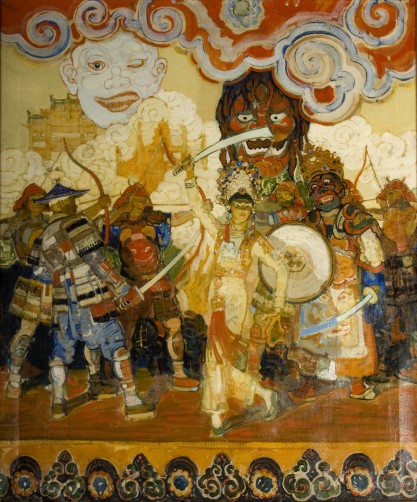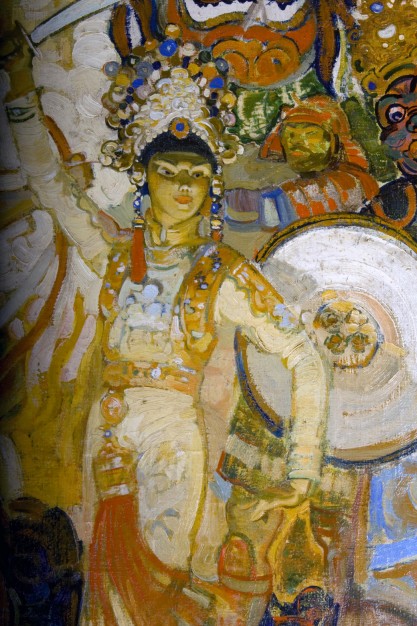


An outstanding, highly stylized, Art Deco, large format oil on canvas painting by the American fine artist and illustrator Henry Soulen.
This was likely featured as an interior illustration for an American weekly magazine such as The Saturday Evening Post. Known for these types of depictions, Soulen was an early student of Howard Pyle; he utilized heavy expressive brush strokes and an impasto oil paint technique. The scene features a moment from Peking opera, filled with the pomp and ceremony associated with the art. Central to the image is a beautiful Daomadan with sword, and surrounding her are a number of actors in masks and ornate costuming and a hodgepodge of Orientalist tropes that evoke the classing Qing dynasty art form. Classic 1920s romantic and nostalgic imagery from the Golden Age of Illustration.


A bio on Henry Soulen
An illustrator for The Saturday Evening Post, Henry Soulen began that career in May, 1912, He attended the Art Students League in Milwaukee, the Art Institute of Chicago, and later studied under the celebrated teacher, Howard Pyle, the founder of the Brandywine School.
He also studied with N.C. Wyeth, Frank Schoonover, and Jessie Wilcox Smith. He also worked for other publications including Country Gentleman and Ladies Home Journal and earned a Peabody Award for his magazine cover designs.
He was known for his use of intense, brilliant color and Soulen’s illustrations are distinguished by a rich, textural surface, at a time when many illustrations were in black and white, his usually appeared in color.
He was a thorough researcher and eventually collected a large and varied collection of costumes, weapons, and other objects that he used in his drawings. At age 62, he became a college professor at the University of Maryland and taught the first illustration that art department offered.
During World War II, he gave free art lessons at the Valley Forge Military Hospital, a rehabilitation center for veterans.He was also the recipient of the Peabody Award for magazine cover design. The artist made his home between Phoenixville, PA and Oceanville, ME, until he died in 1965.
